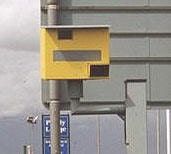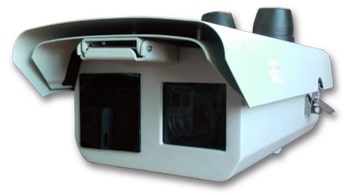This abstract refers to a work that has not been completed yet. Estimated completion date: June 2020. Contant author or his scientific adviser after that date to obtain complete text.
Abstract
Content
- Introduction
- 1. Theme urgency
- 2. Goal and tasks of the research
- 3. Overview of research and development
- 3.1 Overview of foreign developments
- 3.2 Overview of domestic developments
- 4. Overview of pattern recognition libraries
- 5. Ways to solve the problem
- Conclusion
- References
Introduction
In many countries of the world, the task of intellectualizing management and ensuring security is becoming more and more obvious. The likelihood of various emergencies. To solve this problem, research and development are being carried out in the field of intelligent transport systems (ITS). Monitoring and data analysis. Calculate the optimal route; prevent emergency and dangerous situations that occur during traffic [1, 2].
One of the specific violations is certain dangerous driving. The creation of such emergencies requires not only an operational review, but also an assessment by the inspectors of the road patrol service (DPS). In this regard, it is advisable to use intelligent systems, which are a subjective factor and provide greater traffic safety.
1. Theme urgency
Currently, one of the most dangerous modes of transport is automobile. Every day, people die or get injured as a result of road traffic accidents (RTAs). About 1.35 million people die each year as a result of accidents. Also, economic losses are very huge. Accidents cost most countries up to 3% of their gross domestic product [3].
Dangerous driving is one of the potential situations that entails the occurrence of an accident. The term in question is quite new in traffic rules. In addition to the Russian Federation, the definition of dangerous driving is also described in the laws of some other countries, such as the United Kingdom and Canada.
In connection with the foregoing, there is a need for an effective assessment and operational determination of situations associated with dangerous driving.
2. Goal and tasks of the research
The aim of the study is to develop a system for determining dangerous driving by analyzing the vehicle trajectory. In this regard, the main objectives of the study will be:
- analysis of existing systems capable of detecting dangerous driving and traffic violations;
- analysis of software libraries for pattern recognition to determine the configuration of the vehicle trajectory;
- development of an algorithm for analyzing the vehicle trajectory;
- software development for hazardous driving detection system.
The initial data for the study are the readings of the sensors of the navigation system that detect the current location of the vehicle.
The object of study is a system for analyzing the vehicle trajectory.
The subject of research is the development of an algorithm for recognizing dangerous driving.
As a result of the research work, it is planned to obtain software that analyzes the trajectory of the vehicle and determines dangerous driving.
3. Overview of research and development
Scientists in many countries of the world are involved in the organization and development of ITS. In particular, the study of the problem of operational detection of traffic violations, accident, emergency situations.
Many companies develop algorithms and software to analyze the trajectory of the vehicle. In this paper, we consider some of the developments.
3.1 Overview of foreign developments
Archer Soft from the United States has developed the Green Road system, which allows monitoring and assessment of driving quality. This solution consists of a GreenBox device that reads vehicle motion parameters, a web control platform, and a mobile application. GreenBox allows you to calculate vehicle speed, downtime, and other necessary parameters that it passes for processing to a web application. Such a system allows you to receive notifications about the nature of the car’s movement in real time through the application installed on your smartphone or tablet [4].
The British Gatso speed control system (fig. 1) is capable of detecting violations of rules using special radar technology. In case of violation of traffic rules, a camera with a flash photographs the vehicle from behind. Such a picture allows you to consider the registration mark, as well as white calibration lines applied to the roadway. The data recorded by the system are subsequently analyzed by the police [5].

Figure 1 – Gatso system
3.2 Overview of domestic developments
The Russian service Yandex.Drive has developed a system that is able to calculate dangerous driving. The algorithm is based on the collection of data from sensors that are located inside the car. It also evaluates the angle at which the steering wheel is rotated, and the force when you press the brakes of the car. The information received is analyzed, and the processing results are notified to the driver. If the driver does not change his driving style and continues to perform dangerous maneuvers, then access to the service is limited for him.
A similar technology for detecting dangerous driving is used by the Yandex.Taxi service. However, unlike Yandex.Drive, the calculation of dangerous driving is based on the processing of data from the accelerometer in the driver’s smartphone. In case of repeated violations, such a driver does not get access to orders [6].
The system "Autopatrol Universal" of the company "Stilsoft" allows you to identify various cases of traffic violations. This system determines the speed of the intruder by radar. For this, the Autopatrol Universal can be equipped with controlling controllers, photoradar controllers, IP video cameras with IR projectors. Processing of violation data is carried out in a special center [7].
The Integra-KDD-M complex (fig. 2) is a system that automatically detects traffic violations using special cameras and cameras. Rapid identification of violators allows you to effectively manage traffic flows and provide the necessary information to users. This system is designed to detect a large number of traffic violations, for example, exceeding the established vehicle speed [8]. However, like the Autopatrol Universal system, it is not capable of determining dangerous driving.

Figure 2 – Appearance of the Integra-KDD-M complex
The Crossroads system works in a similar way, which also performs automatic photo and video recording of traffic violations. Like Autopatrol Universal and Integra-KDD-M, this system identifies violations described in the Code of Administrative Offenses of the Russian Federation (CAO).
4. Overview of pattern recognition libraries
When considering the issue of identifying dangerous driving by analyzing the vehicle trajectory, a review of image recognition libraries was also performed. Let's consider some of them.
One of the most popular libraries used in image recognition programs is OpenCV (Open Source Computer Vision Library). This computer vision library contains a set of algorithms for processing open source images. By connecting OpenCV to a project, a developer gains access to more than 500 functions. The library is written in C ++, but it also has an interface in Python, Ruby, Java, Matlab, etc. Also, special shells have been developed to be able to write code in other languages. OpenCV-compatible operating systems include Microsoft Windows, Mac OS X, Linux, Android, and iOS.
One of the main goals of developing the library was to increase the efficiency of computing and provide an intelligently easy interface for creating real-time applications. OpenCV has found its application in many projects related to computer vision technology.
The AForge.NET library, written in C #, is also used in the field of solving computer vision problems. This open source library contains a number of library components for solving a wide range of tasks.
VXL (the Vision-something-Libraries) is a set of libraries designed for scientific computing and computer vision technologies. It contains libraries for working with geometric primitive elements (VGL), images (VIL), numbers (VNL), etc. [9].
It should be noted that the performance of OpenCV is superior to that of the other libraries discussed above. The ability to work on many platforms and operating systems puts OpenCV in the leading position when choosing the necessary framework, which is also confirmed by the large number of users of this library.
5. Ways to solve the problem
Currently, in most countries of the world, cameras and cameras are used to determine violations during traffic. The materials read from such devices allow you to visually consider the episode of violation of the rules, as well as determine the registration plates of the vehicle. Such systems can identify situations such as, for example, speeding. However, in conditions of heavy traffic in the presence of a large number of vehicles that fall into the field of view of the camera, the definition of dangerous driving becomes quite problematic.
In order to solve this problem, it is proposed to identify such traffic violations by analyzing the vehicle trajectory. For this, it is necessary to place a geolocation device in the vehicle capable of determining the coordinates of its location. Thus, during the movement of the vehicle, an array of points (coordinates) is obtained, by connecting which one can obtain the desired trajectory.
By analyzing the vehicle trajectories, their relative position, as well as the motion parameters, it is possible to calculate dangerous driving situations (fig. 3).

Figure 3 – Analysis of the vehicle trajectory
(animation: 6 frames, 5 cycles of repeating, 16 kilobytes)
As can be seen from the figure, traffic on a section of the road occurs in one direction. Two trajectories are considered: black dots indicate the coordinates of the vehicle location, which are combined by auxiliary blue lines. The green rectangle illustrates the trajectory obtained during the rebuild. In this situation, traffic violations are not observed. The red box shows the situation in which a violation of the rules occurs. This is expressed in non-compliance with the lateral interval, which is defined as dangerous driving.
As described in article [1], such an analysis of the trajectories can be performed using computer vision technologies. Using the pattern recognition library, the system is able to efficiently classify trajectories according to a special alphabet of permissible trajectories.
Also, to identify situations of dangerous driving, it is necessary to calculate some kinematic parameters of the vehicle, such as speed and acceleration. They can be found using the coordinates of the trajectory.
Thus, by analyzing the above data, the system is able to determine dangerous driving.
Conclusion
In the course of the research work, an overview of existing ITS capable of detecting traffic violations and dangerous driving was performed. The international developments on research in the field of intellectualization of transport are considered. A review of software libraries that allow the use of computer vision technology in projects has been completed. Methods for solving the problem of determining dangerous driving are presented.
References
- Николаенко, Д.В. Исследование состояния вопроса и постановка задачи разработки системы анализа траектории движения транспортного средства / Д.В. Николаенко, А.В. Хайдуков // 69–я Международная студенческая научно–техническая конференция, Астрахань, 15–19 апреля 2019 года [Электронный ресурс]: материалы / Астрахан. гос. техн. ун–т. — Астрахань: Изд–во АГТУ, 2019.
- Николаева Р.В., Газизова З.С., Загидулина А.Д. Формирование и развитие интеллектуальных транспортных систем // Техника и технология транспорта. Выпуск № 1(1) – Казань, КГАСУ, 2016. С. 8-14.
- Дорожно-транспортные травмы [Электронный ресурс]. — Режим доступа: https://www.who.int/...
- Driving Behavior Monitoring Solution [Электронный ресурс]. — Режим доступа: https://archer-soft.com/...
- Gatso Speed Cameras Explained [Электронный ресурс]. — Режим доступа: https:// www.speedcamerasuk.com/...
- "Яндекс.Драйв" тестирует в Петербурге систему распознавания опасного вождения [Электронный ресурс]. — Режим доступа: https://tass.ru/...
- Система фиксации нарушений ПДД «Автопатруль Универсал» [Электронный ресурс]. — Режим доступа: https://stilsoft.ru/...
- Комплекс автоматической фотовидеофиксации нарушений ПДД «Интегра-КДД-М» [Электронный ресурс]. — Режим доступа: https://www.integra-s.com/...
- Булатников, Е.В. Сравнение библиотек компьютерного зрения для применения в приложении, использующем технологию распознавания плоских изображений / Е.В. Булатников, А.А. Гоева // Вестник МГУП имени Ивана Федорова — 2015. — № 6. — с. 85–91. URL: https://cyberleninka.ru/...
